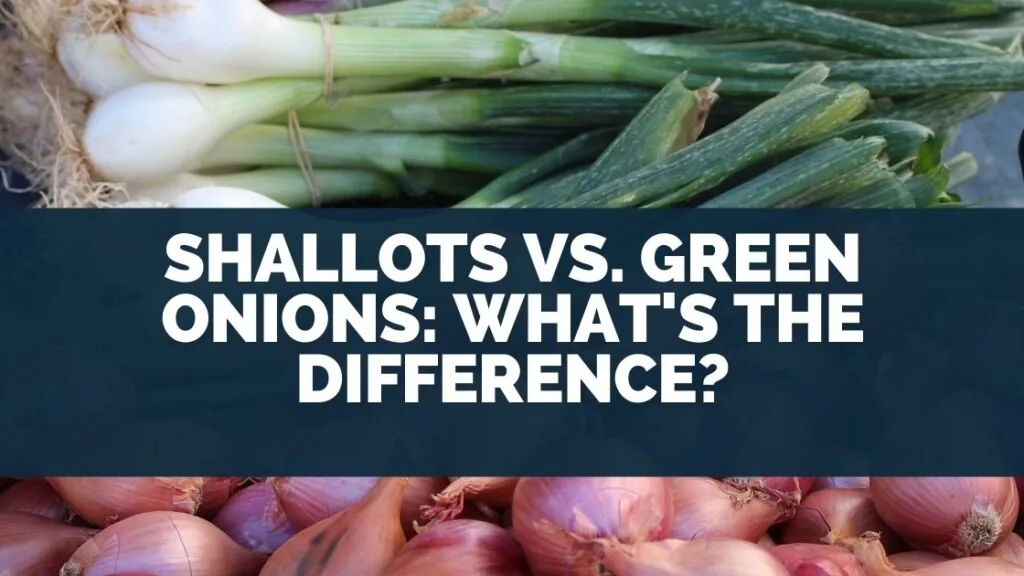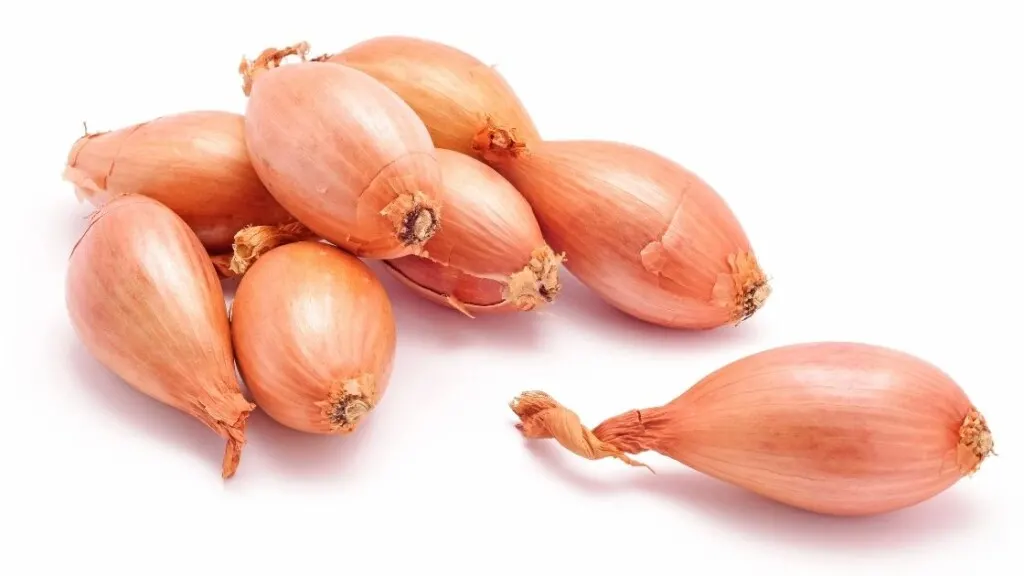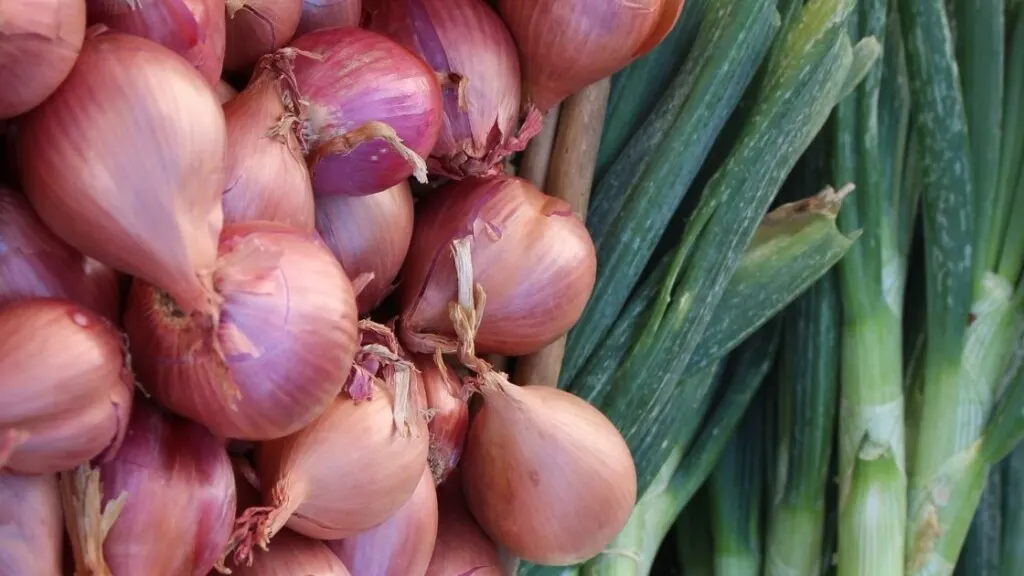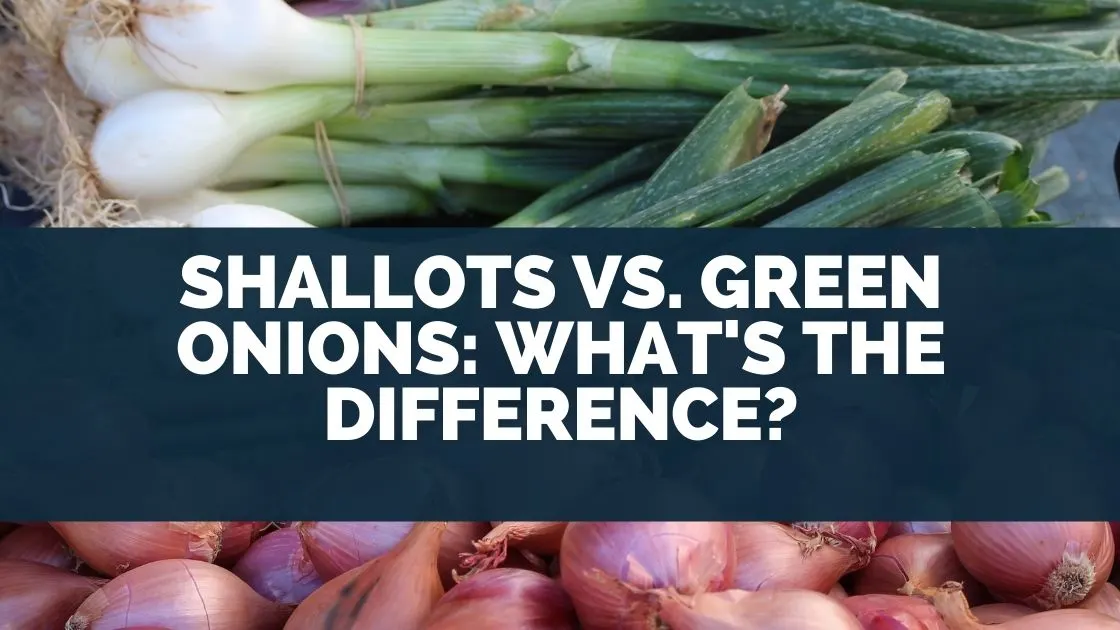
Shallots, like onions and garlic, are a common ingredient in the grocery store. They’re an essential component of any kitchen pantry, adding a subtle, soft, and fresh flavor to dressings, stocks, quiches. Shallots are a versatile and supporting component in several dishes, delicate enough to eat raw and readily roasted to melt-in-your-mouth perfection.
There’s more amazing information about shallots and green onions for those who are already acquainted with them that you’re not aware of it. So stay with me if you want to discover more about shallot and green onion.
Continue reading this article to know the difference between shallots and green onions!
Table of Contents
What Are Shallots?
Scallions (Allium ascalonicum), a member of the allium family, are similar to onions, garlic, and chives in terms of their structure and flavor. As a flavoring ingredient, shallots can be chopped, diced, or sliced to impart either a mild onion flavor or a strong acidity reminiscent of garlic.
Vinaigrettes can also benefit from the addition of these spices.
Shallots were brought to India and the Mediterranean by traders from Central or South Asia. T
hey were found by the Greeks at Ashkelon, a Palestinian port that is today Ashkelon in Israel, while the Egyptians used them as medical cures.
What Are Green Onions?

Green onions or scallions are the younger stalks of the common onion, harvested when they have yet to develop their bulb.
They’re long and green with white bases that are tender enough to eat raw. Green onions are often cooked for flavor, but are also eaten raw in salads, tacos, stir fry, etc.
Plus, green onion (or scallion) is also one of the best replacements for chives. So feel free to use them if this is not a chive season.
The scientific name of green onions is Allium fistulosum; therefore, they are in the same group as the shallot. But of course, green onions are not the same thing as shallots.
Difference Between Shallots and Green Onions

Differences in Harvest and Cultivation
Green onions and shallots are similar in botany, with some notable differences. They both belong to the allium family and have many things in common. The underground roots, bulbs, green stalks that develop from the bulb, and flowers are all comparable.
Green onions, on the other hand, are grown from seedlings rather than being produced from seeds.
Green onion bulbs are therefore tiny or have not developed and the green part is still alive. However, as shallots get older, their bulbs grow larger and their green tops die before they are collected.
Green onions may be found all year, but shallots are best harvested in the summer and fall.
Appearance
Green onions and shallots have several botanic characteristics, so they appear different.
Green onions are a type of onion with a delicate, elongated form and white base, and green stems. Green onions may produce bulbs, but they must be harvested early to avoid bulb growth; thus, you can tell green onions from shallots by their bulbs.
Shallots, on the other hand, may produce a green top; however, they are rarely found in supermarkets since shallots are exclusively sold for their bulb components.
Shallots are a type of onion native to the Mediterranean region. Shallots have brown, grey, or red-pink papery skins that are simple to remove and an elongated oval form with brown, grey, or red-pink flesh. The color of shallot flesh ranges from off-white to light purple to light crimson.
Shallots and garlic are very similar, with many clusters of cloves in a hard bulb. Small shallots might have 2 to 3 cloves, while a large one may have as many as 6.
Distinctive Flavor
Shallot and green onions are members of the same genus but they have distinct tastes. In reality, their flavor is quite different from one another.
Green onions have a flavor that is somewhat similar to onions. Their flavor is more pungent, with a hint of garlicky than the oniony taste in green onions.
Green onions have a gentler flavor since they are immature onions. In addition, the green tops of green onions have a grassy flavor, whereas shallots do not.
Shallots have a pleasant sweetness, especially when cooked until browned. Even after being cooked, green onions do not have this flavor. Green onions may even lose their taste after cooking, particularly the green portions.
Size and Vitamin Content
Green onions and shallots also differ in size and vitamin content.
Since green onions are harvested before they develop their bulbs, they’re much shorter than shallots, which may grow as long as three inches. Plus, they have a green top that is never present in shallots.
Green onions are an excellent source of vitamin A, potassium, and folate. They also contain allicin, which has potential health benefits against cancer and inflammation.
Shallots are rich in vitamins B1, B2, B6, C, thiamine calcium, iron, magnesium, phosphorus, and copper. They also contain quercetin, a flavonoid that may play a role in cancer prevention.
Culinary Usage Differences
Most cooks choose green onions or scallions if they want a hint of onion flavor. In addition, the white base and leaves are used as a garnish for many dishes because this part does not have a strong taste.
Shallots tend to be used when cooking since their flesh is much milder, with a sweet-savory flavor. The flavor of shallots is stronger than that of green onions, but not quite as strong as onion.
Shallots are frequently used in French cuisine, whereas green onions are more common among Chinese and Mexican dishes.
How to Store Shallots and Green Onions?

Green onions are usually found in the produce section of supermarkets, but they are also available year-round. Green onions have a fairly long shelf-life, so you can store them tightly wrapped in the refrigerator for about one week.
Shallots are typically sold with their papery skins intact. If they’re not peeled, shallots should be stored in the refrigerator to prevent spoiling.
Shallots can be stored in a cool, dark place for around one month. If you plan on using shallot bulbs, break off only the number of cloves that you need for cooking and discard the rest. You can store whole shallots in an airtight container at room temperature.
You can also read: How Do You Store Leafy Greens in the Fridge?
Conclusion
Shallots and green onions are both members of the Allium genus and they share many similarities, including their usage in cooking. They also have similar nutritional benefits and different tastes.
Their sizes vary greatly with shallots being much larger than green onions, and some people use one or the other depending on what dish they’re preparing. Green onions also have a longer shelf-life than shallots and can be stored much more easily.
In a nutshell, green onions and shallots are two promising culinary ingredients that have their own distinct flavor. Since both vegetables have different flavors and forms, it’s best to match the type of green onion to a dish if you want a subtle onion taste.


Leave a comment